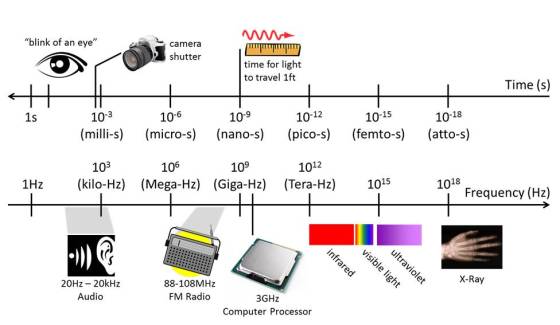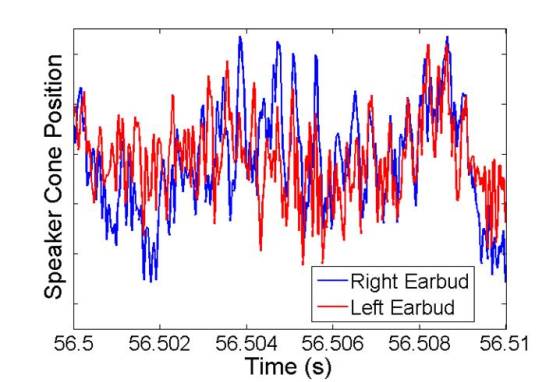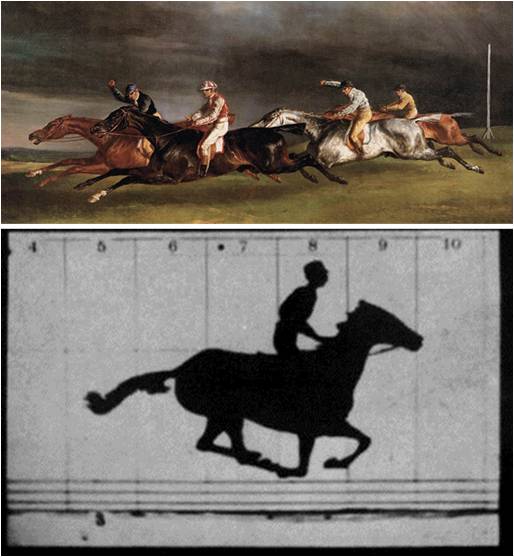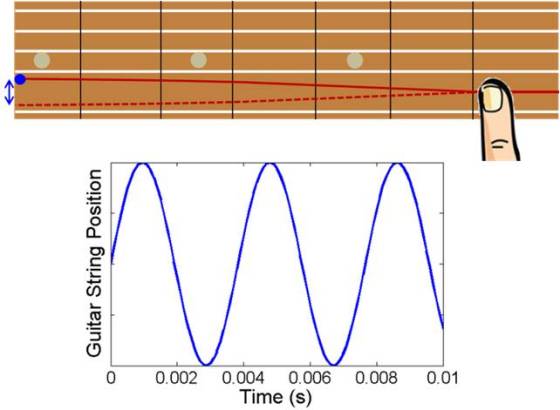by Andy Berger
If the width of a human hair is the smallest thing visible to the naked eye, what is the shortest amount of time that we can distinguish? The phrase “in the blink of an eye” suggests an answer. And it’s a decent suggestion. Go ahead and blink. Back already? That was fast. The average length of a blink is 0.1 seconds. Compared to some physical processes – as shown below – that is actually a really long time.

TOP: Time interval for some fast events.
BOTTOM: Frequency of various waves, shown directly below the amount of time for 1 period of oscillation.
I’ve always enjoyed music, as I’m sure many of you do. In fact, one of my favorite hobbies is to play the guitar. There is a lot of physics behind the workings of a guitar, but one of the most fascinating aspects is the speed of sound-producing processes. Consider the simple case of playing a middle C (for those guitar players out there – this is the first fret on the B-string of the guitar, or for piano players – the key in the exact middle of a standard keyboard). When this note is played, the string vibrates 261 times per second (or 261 Hz).
This plot shows the position of the blue dot on the string versus time. Note that, because it’s vibrating at 261 Hz, it takes less than .004 seconds to vibrate back and forth once. In the time it takes you to blink, the string has gone back and forth 25 times. While it’s vibrating, the string pushes around air molecules. Eventually, these air molecules bump into your eardrum causing it to vibrate just like the string, and voila – you hear a middle C.
Of course, music isn’t terribly interesting if you just hear a single note at a time. Often a guitarist might be playing a chord with six different notes, while the singer and bassist are each holding a note, all during a symbol crash and bass drum thump. The speakers that we use to listen to recorded music have to vibrate accordingly to imitate all these different sounds (see a vibrating speaker in action).

Signal responsible for vibrating the left and right speaker cones at 56.5 seconds into Metallica’s “No Leaf Clover.”
This is the actual signal sent to the speakers 56.5 seconds into (my favorite song) Metallica’s “No Leaf Clover.” I chose this part of the song, because not only are there two guitars, a bassist, and a drummer playing, but they are supported by an entire orchestra. It’s amazing to me that two tiny earbuds can accurately replicate the sound of nearly 100 instruments. Sports fans: the amount of time depicted in this graph – .01 seconds – is the margin by which Michael Phelps won the 100m butterfly (and 7th gold) at the 2008 Olympics.
Our eardrums are not the only aspect of biology that are capable of high speed dynamics. In my first blog post, I discussed the nanoscale machinery of DNA. This machinery isn’t just small – it also operates very quickly. Check out this real-time animation: DNA Transcription. The enzyme zipping along the DNA is reading and copying the genetic code at a rate of about 30 nucleotides per second. Try to count to 30 in one second. In the time it takes you to blink an eye, 3 nucleotides have been transcribed simultaneously throughout the nuclei of most of the cells in your body. I wish I had seen visualizations like this while I was studying biology, chemistry, and physics in high school. The static illustrations in a textbook just can’t compete.
As impressive as the machinery of our cells is, they move at a snail’s pace when compared with the information processing speed of our electronic devices. We have all come to expect a lot of our computers and cell phones. But let’s stop and consider what has to happen to open a saved picture. A typical image is a couple of megabytes in size. Your computer has to individually read each of those million bytes in order to reassemble the image from the 1s and 0s that currently encode it. If it took “the blink of an eye” (0.1s) to read each bit, it would take more than a day to load a single image! Forget watching a video. Luckily, a computer can shuttle information around blazingly fast. The bits are zipping by at billions of bytes per second – and so as far as we are concerned, an image opens instantly. To draw an analogy, when a hard drive is reading the bits that encode an image, the bit sensor is like a “jet plane flying at [18,600 miles per hour] one meter above the ground recording each blade of grass.”
Technology has enabled us to do a lot in the time that passes in the blink of an eye. It took the invention of high speed photography (1 frame every .04 seconds) to prove that all four hooves of a galloping horse are simultaneously in the air, tucked underneath its body. Prior to these photographs, artists would incorrectly depict the position of the legs of galloping horses. Time simply moves too fast for human perception to accurately keep up.

TOP: Painting of galloping horses from 1821.
BOTTOM: High-speed photograph from 1878.
Today, scientists use “cameras” ten trillion times faster – taking snapshots once every femtosecond (10-15 seconds) – and can actually monitor the progress of chemical reactions. There are 10,000 times more femtoseconds in the blink of an eye than there are years in the age of the universe. Take a moment to pause and appreciate how quickly everything is buzzing around us, shaping our world and how we interact with and experience it.
—————————————————————————————————————–
About Andy Berger
 I grew up in Mansfield, Ohio, received my undergraduate degree from Kenyon College in Gambier, Ohio, and am now finishing my fifth year of the physics PhD program at Ohio State. I am a condensed matter experimentalist with a focus on scanning probe microscopy, magnetism, and graphene. I never would’ve guessed that would be my “job description” when I was in high school. Away from the lab, I enjoy staying active – mostly through swimming, running, cycling, and soccer.
I grew up in Mansfield, Ohio, received my undergraduate degree from Kenyon College in Gambier, Ohio, and am now finishing my fifth year of the physics PhD program at Ohio State. I am a condensed matter experimentalist with a focus on scanning probe microscopy, magnetism, and graphene. I never would’ve guessed that would be my “job description” when I was in high school. Away from the lab, I enjoy staying active – mostly through swimming, running, cycling, and soccer.


Pingback: Science Stuck in the Middle: Lasers, Diamonds, and DNA, Oh My! | A day in the life...